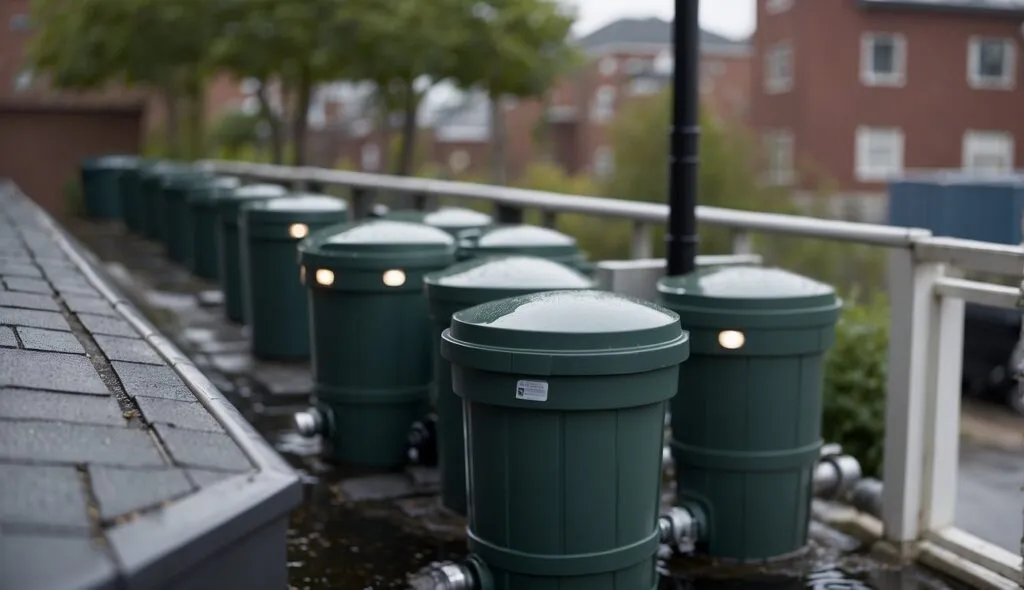As we become more aware of our environmental impact, we are constantly looking for ways to reduce our carbon footprint. One area where we can make a significant impact is in our outdoor projects. Sustainable outdoor projects not only reduce our environmental impact but also provide a beautiful and functional space for us to enjoy.
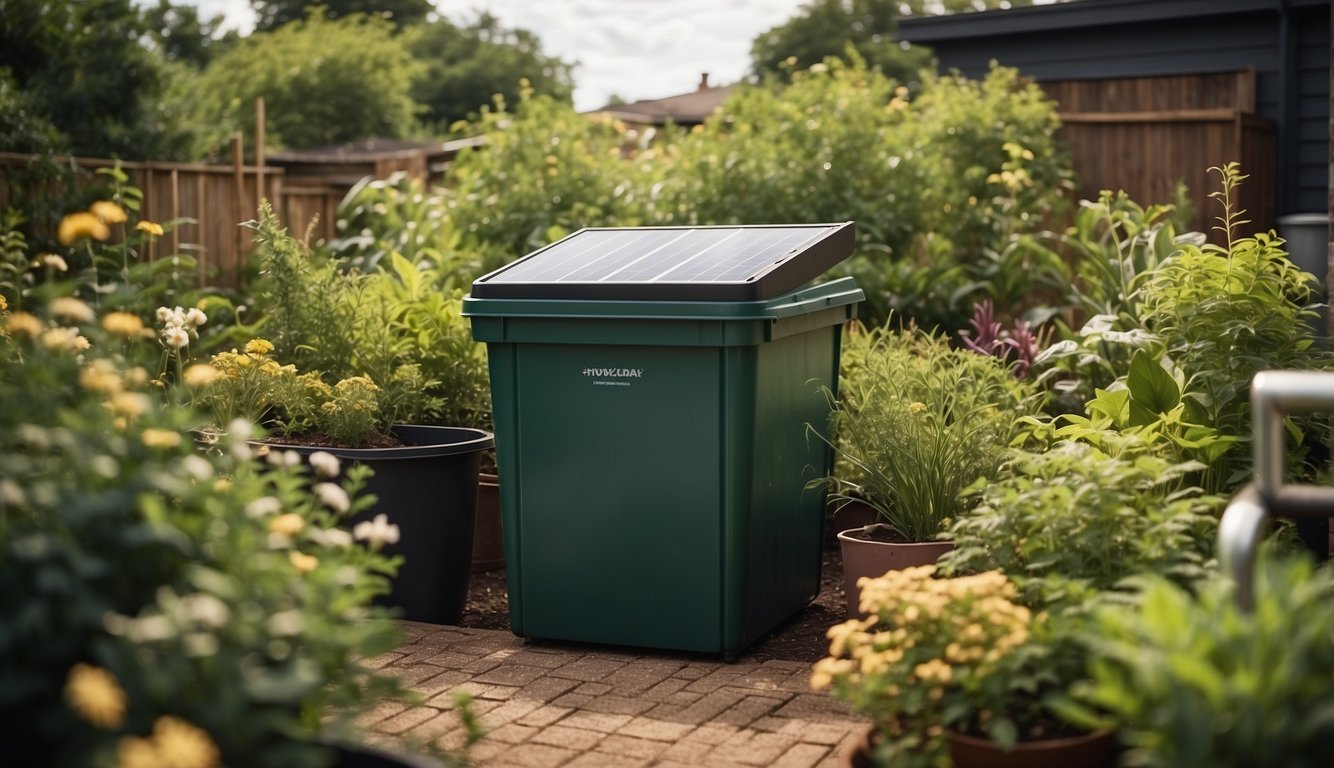
Designing sustainable landscapes is an essential part of creating an eco-friendly outdoor space. This involves using native plants, reducing water usage, and minimizing the use of harmful chemicals. By creating a balanced ecosystem that respects nature’s rhythms, we can reduce our environmental impact and enhance natural biodiversity.
Water conservation strategies are also critical in sustainable outdoor projects. This includes using drought-tolerant plants, installing rainwater harvesting systems, and using permeable surfaces to reduce rainwater runoff. By reducing our water usage, we can conserve this precious resource and reduce our environmental impact.
Table of Contents
Key Takeaways
- Designing sustainable landscapes is essential for creating an eco-friendly outdoor space.
- Water conservation strategies help reduce our water usage and environmental impact.
- Using sustainable materials and practices can preserve ecosystems and biodiversity.
Designing Sustainable Landscapes
When it comes to designing sustainable landscapes, there are a lot of factors to consider. From incorporating native plants to utilizing drought-tolerant varieties, there are many ways to create a beautiful outdoor space that is also environmentally friendly. Here are some key considerations for designing sustainable landscapes:
Incorporating Native Plants
One of the best ways to create a sustainable landscape is to incorporate native plants. These are plants that are indigenous to your region and have adapted to the local climate and soil conditions. By using native plants in your landscape design, you can help support local biodiversity and reduce the need for fertilizers, pesticides, and other chemicals.
Utilizing Drought-Tolerant Varieties
Another important consideration for sustainable landscape design is the use of drought-tolerant varieties. These are plants that require less water than traditional landscaping plants, which can help conserve water and reduce your overall water usage. Some popular drought-tolerant plants include succulents, cacti, and ornamental grasses.
Hardscaping and Permeable Surfaces
In addition to using native and drought-tolerant plants, hardscaping and permeable surfaces can also play a role in sustainable landscape design. Hardscaping refers to the use of non-plant materials in your landscape design, such as rocks, gravel, and pavers. By incorporating hardscaping elements into your design, you can reduce the amount of water needed for irrigation and create a more low-maintenance landscape.
Permeable surfaces, such as permeable paving, are also important for sustainable landscape design. These surfaces allow water to infiltrate the soil below, instead of running off and contributing to erosion and water pollution. By using permeable paving in your landscape design, you can help reduce your environmental impact and create a more sustainable outdoor space.
Overall, designing a sustainable landscape requires careful consideration of a variety of factors, including plant selection, hardscaping, and permeable surfaces. By taking a thoughtful and environmentally conscious approach to your landscape design, you can create a beautiful outdoor space that is also sustainable and eco-friendly.
Water Conservation Strategies
Water conservation is an essential aspect of sustainable outdoor projects. As responsible citizens, we must take steps to conserve water and reduce wastage. Here are some effective water conservation strategies that can be implemented in outdoor projects:
Rainwater Harvesting Techniques
Rainwater harvesting is a simple and effective way to conserve water. By collecting rainwater, we can reduce our reliance on municipal water supplies and save money on water bills. Rainwater can be collected in barrels or cisterns and used for watering plants, washing cars, and other non-potable uses.
To maximize rainwater harvesting, consider installing a rain garden. A rain garden is a shallow depression in the ground that is designed to capture rainwater runoff. The water is then absorbed by plants and soil, reducing erosion and improving water quality.
Drip Irrigation and Soaker Hoses
Drip irrigation and soaker hoses are efficient irrigation systems that can save water and reduce runoff. These systems deliver water directly to the roots of plants, minimizing evaporation and reducing water waste.
Drip irrigation systems use a network of tubes and emitters to deliver water to plants. Soaker hoses are porous hoses that release water slowly and evenly along their length. Both systems are easy to install and can be customized to meet the specific needs of your garden.
Hydrozoning
Hydrozoning is a water-saving technique that involves grouping plants with similar water needs together. By grouping plants based on their water requirements, we can avoid overwatering and reduce water waste.
To implement hydrozoning, divide your garden into zones based on water needs. Group plants with high water needs together in one zone and plants with low water needs in another zone. This will allow you to water each zone separately and avoid overwatering.
In conclusion, water conservation is an essential aspect of sustainable outdoor projects. By implementing rainwater harvesting techniques, efficient irrigation systems, and hydrozoning, we can reduce our water usage and protect this valuable resource.
Materials and Resources
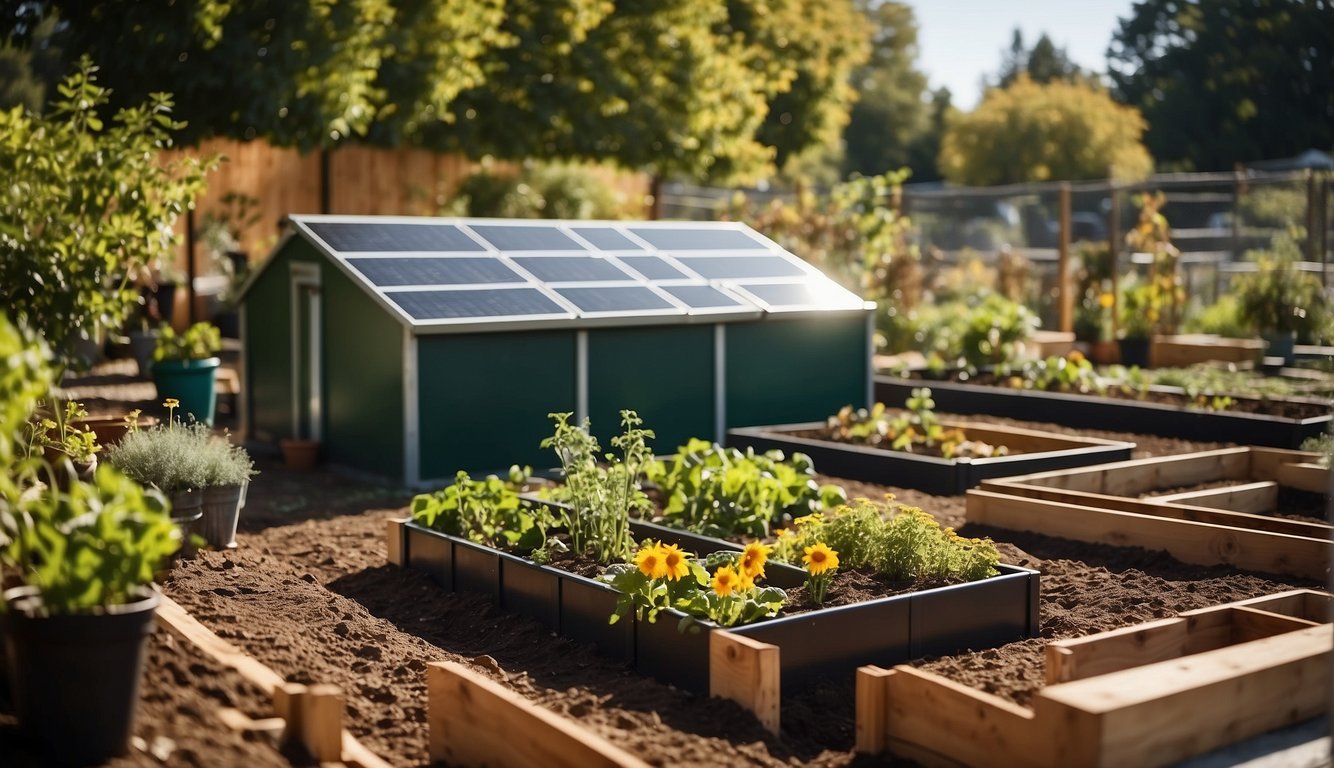
When planning sustainable outdoor projects, choosing the right materials is crucial. Not only do we want to create a beautiful space, but we also want to minimize the environmental impact of our project. In this section, we will discuss how to choose sustainable materials and explore reclaimed and recycled options.
Choosing Sustainable Materials
When selecting materials for our outdoor project, we should consider their environmental impact. Some materials are more sustainable than others. For example, using reclaimed wood instead of new wood can reduce the demand for new resources and keep usable materials out of landfills. Similarly, using recycled plastic for decking or furniture can help reduce plastic waste.
Another key factor to consider when choosing materials is their durability. Sustainable materials should be long-lasting and require minimal maintenance. This reduces the need for frequent replacements and repairs, which can be costly and wasteful.
Reclaimed and Recycled Options
Reclaimed and recycled materials are excellent options for sustainable outdoor projects. Reclaimed wood, for example, can be used for garden structures, decking, and fencing. It adds character to our outdoor space while reducing the demand for new wood.
Recycled plastic lumber is another great option for decking and outdoor furniture. It is durable, low-maintenance, and made from recycled plastic waste. Using recycled glass in landscaping projects is also a sustainable choice. It can be used as a decorative element in walkways, driveways, and garden beds.
When it comes to mulch, gravel, and concrete, we should choose options that are locally sourced and produced. This reduces transportation emissions and supports local businesses. Additionally, we can use permeable concrete or gravel to reduce runoff and promote water conservation.
In summary, choosing sustainable materials and exploring reclaimed and recycled options are essential steps in creating a sustainable outdoor project. By considering the environmental impact of our materials, we can create a beautiful outdoor space that minimizes waste and reduces our carbon footprint.
Ecosystem and Biodiversity Preservation
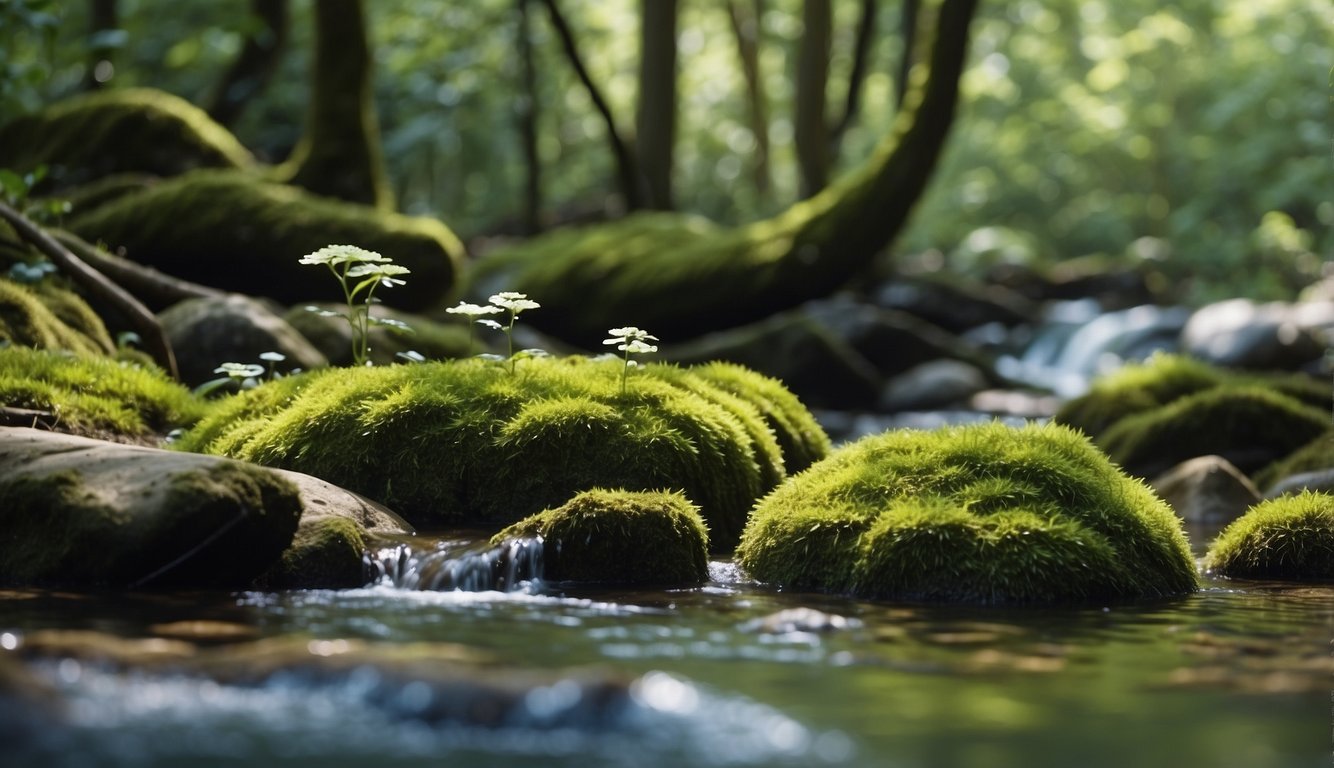
Preserving and protecting our planet’s ecosystems and biodiversity is crucial for our future. As outdoor enthusiasts, we have a responsibility to minimize our impact on the environment and promote sustainable practices.
Conservation efforts should focus on protecting wildlife habitats and maintaining healthy ecosystems. This can be achieved through the creation of protected areas, such as UNESCO designated sites, biosphere reserves, and national parks. These areas provide a safe haven for wildlife and allow for the restoration of degraded ecosystems.
In addition to protected areas, sustainable outdoor projects should aim to promote biodiversity. This can be achieved by incorporating native plant species into landscaping projects and avoiding the use of pesticides and herbicides. Planting a diverse range of species can help to create a healthy ecosystem and provide habitat for a variety of wildlife.
We must also be mindful of the impact that outdoor recreation can have on the environment. Trails should be designed and maintained to minimize erosion and protect sensitive habitats. Visitors should be encouraged to follow Leave No Trace principles and pack out all trash.
In conclusion, preserving ecosystems and promoting biodiversity should be a top priority for any sustainable outdoor project. By taking a proactive approach to conservation, we can ensure that future generations can enjoy the natural beauty of our planet.
Sustainable Maintenance Practices

Maintaining an eco-friendly outdoor space requires a commitment to sustainable maintenance practices. These practices can help us reduce our environmental impact while keeping our outdoor spaces beautiful and healthy. In this section, we will explore some of the best sustainable maintenance practices for your outdoor projects.
Organic Gardening and Composting
One of the most effective ways to maintain a sustainable outdoor space is through organic gardening and composting. Organic gardening involves using natural fertilizers and pest control methods, which can help reduce the use of harmful chemicals. Composting is also an essential part of organic gardening. By composting organic waste, we can create nutrient-rich soil that can be used to fertilize our plants and reduce the need for chemical fertilizers.
Natural Pest Management
Another important aspect of sustainable maintenance practices is natural pest management. Instead of using chemical pesticides, we can use natural methods to control pests. For example, we can attract beneficial insects like ladybugs and lacewings, which can help control harmful pests like aphids and caterpillars. We can also use natural repellents like garlic, hot pepper spray, and neem oil to deter pests.
Reduced Maintenance Techniques
Reducing the amount of maintenance required for our outdoor spaces is also an important part of sustainable maintenance practices. One way to reduce maintenance is by using mulch. Mulching can help retain moisture in the soil, reduce weed growth, and provide nutrients to the soil. Another way to reduce maintenance is by choosing low-maintenance plants that require less water and pruning. We can also use energy-efficient tools like electric lawn mowers and battery-powered trimmers to reduce our energy consumption.
By implementing these sustainable maintenance practices, we can create beautiful and healthy outdoor spaces while reducing our environmental impact.
Frequently Asked Questions
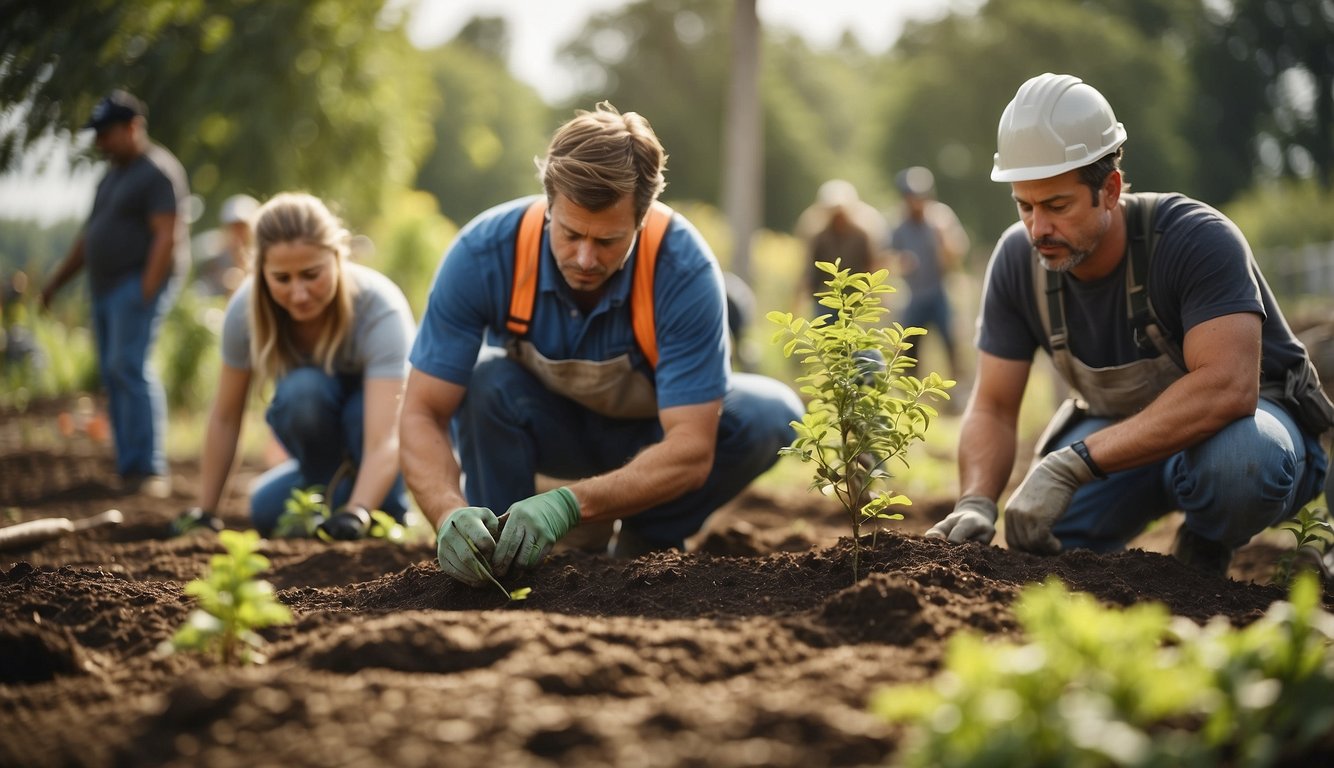
How can I make my backyard more sustainable?
If you want to make your backyard more sustainable, there are several things you can do. One of the easiest and most effective ways is to use native plants that are adapted to your local climate and soil conditions. This will help reduce the need for water, fertilizer, and pesticides. You can also install rain barrels to collect rainwater for later use, which can help reduce your water bill and provide a free source of water for your plants. Another option is to use organic fertilizers and pest control products, which are safer for the environment and your health.
What are the best plants to use in a sustainable garden?
The best plants to use in a sustainable garden are those that are native to your area and are adapted to your local climate and soil conditions. Native plants require less water, fertilizer, and pesticides than non-native plants, which helps reduce your environmental impact. They also provide important habitats for local wildlife, such as birds and butterflies. Some examples of native plants include coneflowers, black-eyed susans, and milkweed.
What sustainable garden ideas are suitable for school projects?
There are many sustainable garden ideas that are suitable for school projects. One idea is to create a pollinator garden, which is a garden designed to attract bees, butterflies, and other pollinators. Another idea is to create a vegetable garden, which can teach students about healthy eating and sustainable agriculture. You can also create a rain garden, which is a garden designed to capture and filter rainwater runoff, or a composting system, which can teach students about the importance of recycling and reducing waste.
How can I start a sustainable garden as a beginner?
Starting a sustainable garden as a beginner is easier than you might think. The first step is to choose a sunny location with well-drained soil. You can then prepare the soil by removing any weeds and adding organic matter, such as compost or aged manure. Next, choose plants that are adapted to your local climate and soil conditions, and plant them according to their spacing and depth requirements. Finally, water your plants regularly, and use organic fertilizers and pest control products as needed.
What eco-friendly products are recommended for garden use?
There are many eco-friendly products that are recommended for garden use. Some examples include organic fertilizers, which are made from natural materials such as compost, bone meal, and blood meal. You can also use organic pest control products, such as neem oil or insecticidal soap, which are safer for the environment and your health than chemical pesticides. Additionally, you can use biodegradable pots and planters, which are made from materials such as bamboo or coconut coir, instead of plastic.
What are some effective sustainable outdoor projects for students?
Some effective sustainable outdoor projects for students include creating a rain garden, building a composting system, planting a pollinator garden, or starting a vegetable garden. These projects can teach students about the importance of sustainability and environmental stewardship, while also providing hands-on learning opportunities and promoting healthy outdoor activity.

